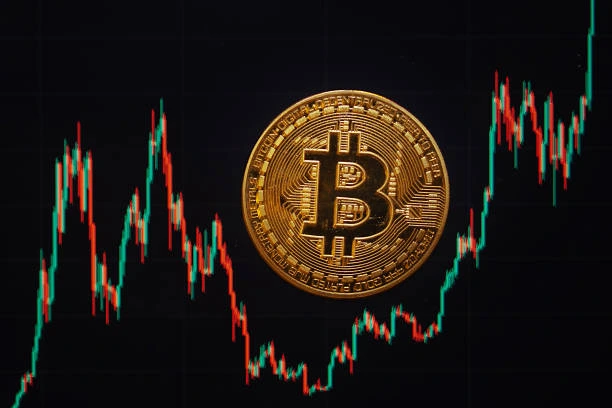Crypto Crash is one of the most dreaded things for every Crypto investor.
Cryptocurrency markets are known for their explosive gains, and sharp declines. Every few years, headlines like “Crypto Crash Wipes Out Billions” resurface, leaving investors asking the same question, “why is crypto crashing?”
A crypto crash happens when digital asset prices fall sharply in a short period, often caused by panic selling, negative news, or broader economic shifts. Unlike regular dips, crashes can erase 20–50% of market value within days or weeks, shaking investors confidence.
In this article, we’ll break down everything you need to know about crypto crashes.
We’ll explore what a crypto crash is, the causes, historical examples, and practical strategies for investors.
What is a Crypto Crash?
A crypto crash is a sudden and significant drop in the value of cryptocurrencies across the market, often exceeding 30% in a short time. While the crypto market is known for its volatility, a crash goes beyond normal price dip. It is marked by:
- Sharp declines of 20%–50% or more within days or weeks.
- Widespread impact across major coins like Bitcoin, Ethereum, and altcoins.
- Panic selling that triggers even further losses.
In simple terms, a crypto crash is when the market collapses quickly, often triggered by fear and uncertainty.
What qualifies as a crash may vary, but experts point to a 20 – 30% drop in major cryptos like Bitcoin or Ethereum, causing chain reactions across altcoins. For instance, if Bitcoin falls rapidly, the entire market often follows because BTC acts as a benchmark to other altcoins.
Examples of Past Major Crypto Crashes:
- 2018 Bear Market: Bitcoin fell from nearly $20,000 in December 2017 to under $4,000 by the end of 2018 erasing over 80% of its value.
- May 2021 Crash: Triggered by China’s mining ban and Elon Musk’s tweets, Bitcoin lost almost 50% in two months.
- Terra/LUNA Collapse (2022): Over $40 billion was wiped out when the stablecoin UST lost its peg, dragging the entire market down.
These crashes show that while crypto markets are of high risk with buoyant reward, they’re also prone to extreme downturns that can happen suddenly.
Top Pick:
- The Best 9 USDT Trading Platforms, Ranked
Key Reasons Why Crypto Crash Happen

When the market turns red, investors often ask, “Why is crypto crashing?” The truth is, crypto crashes rarely occur from a single event; instead they are usually caused by a mix of factors that trigger panic across the market. Here are the main causes:
1. Market Speculation and Overleveraging
A significant driver of crypto crashes is speculative trading, especially when investors use high leverage in trading that amplifies gains but also losses.
When prices dip, forced liquidations create a domino effect. In 2025, excessive borrowing against crypto assets has led to rapid crashes, as seen in recent volatility spikes. Another example are many “meme coins” that spiked and then collapsed in 2021.
2. Regulatory News and Changes
Government announcements about new regulations, bans, or crackdowns can cause fear and panic in the market. For example, stricter regulations on exchanges or bans in major economies like China have historically tanked prices.
In Nigeria, past restrictions on bank crypto transactions also triggered local panic, forcing traders to sell, which oftentimes can lead to sudden and steep price declines.
3. Exchange Hacks and Security Breaches
Crypto exchanges or projects experiencing hacks or security breaches can suffer massive losses. These events erode trust, causing widespread sell-offs in the market. The 2025 Bybit incident, where $1.5 billion in ETH was stolen, contributed to market panic. Similarly, past events like the Mt. Gox collapse in 2014 wiped out billions.
4. Whale Sell-Offs
Large holders of cryptocurrencies, known as whales, can significantly impact the market by selling off large quantities of their holdings. When whales decide to liquidate positions, prices often drop quickly, triggering panic among smaller investors
5. Global Economic Factors
Macroeconomic trends, such as interest rate hikes, inflation, geopolitical tensions, and economic slowdowns, influence crypto markets. When traditional assets offer better returns or less risk, investors may pull money out of crypto, causing sell pressure. The 2025 Fed’s hawkish stance has mirrored this, linking crypto to traditional finance risks.
6. Market Sentiment and Fear
Crypto markets are highly sentiment influenced. Negative news, fear of loss, or even seasonal trends can trigger panic selling, which spreads quickly in a market with limited liquidity.
Related:
- Top 11 Crypto Exchanges in Nigeria
The Difference Between a Crash and Market Volatility

In the cryptocurrency world, price fluctuations are normal and expected, but it’s important to distinguish between everyday market volatility and an actual market crash. Here’s how to tell the difference:
Market Volatility
Market volatility refers to the frequent ups and downs in price caused by normal trading activities, market sentiment shifts, and external factors.
- Normal in crypto where prices swing up and down daily.
- Movements of 5–10% in a day are common and not unusual.
- Driven by trading activity, news, and speculation.
- Example: Bitcoin moving from $26,000 to $28,000 within a week is volatility, not a crash.
Crypto Crash
A crypto crash, on the other hand, is a more severe and sudden event marked by a rapid decline in prices that significantly exceeds regular volatility thresholds; drops of 20% or more within a short timeframe.
- A crash is steeper and faster than normal volatility.
- Declines of 20%–50% across the market in a short time.
- Triggered by panic selling, regulatory news, hacks, or global shocks.
- Example: Bitcoin plunging from $60,000 to $30,000 in May 2021 was a crash.
Unlike normal volatility where prices recover quickly and trading continues, crashes often lead to prolonged bear markets or major corrections.
While volatility represents the inherent risk and opportunity in crypto, a crash signals a major shock to the market driven by certain factors.
Understanding this difference helps investors avoid panic during normal swings, while staying cautious when a real crash happens.
Related:
- Bitcoin Halving: What is it & When is the Next One?
Historical Examples of Major Crypto Crashes

The cryptocurrency market has experienced several dramatic crashes that have shaped investor behavior and market regulations. HHere are some of the most significant crypto crashes that shaped the market:
1. 2018 Bear Market
- What happened: After hitting nearly $20,000 in December 2017, Bitcoin lost over 80% of its value, dropping below $4,000 by the end of 2018.
- Cause: Burst of the 2017 ICO bubble, over-speculation, and lack of regulation.
- Impact: Billions in market value erased, and many altcoins never recovered.
2. Terra/LUNA Collapse (May 2022)
- What happened: The algorithmic stablecoin UST lost its peg to the US dollar, causing LUNA’s price to collapse from $80+ to near zero in days.
- Cause: Weak stablecoin design and a liquidity death spiral.
- Impact: Over $40 billion wiped out, triggering one of the biggest confidence crises in crypto history.
3. FTX Exchange Collapse (November 2022)
- What happened: One of the world’s largest exchanges, FTX, went bankrupt after it was revealed that customer funds were misused.
- Cause: Fraud, lack of transparency, and over-leveraging.
- Impact: Over $30 billion lost in market cap, thousands of users locked out of their funds, and regulators worldwide cracked down harder on crypto.
4. 2020 COVID-19 Crash
- What happened: In March 2020, Bitcoin fell from around $9,000 to under $5,000 in just two days.
- Cause: Global panic-selling across all markets due to COVID-19 uncertainty.
- Impact: Bitcoin rebounded later in 2020, starting the 2021 bull run.
These crashes highlight one thing; while crypto can deliver massive gains, it’s also vulnerable to sudden, catastrophic downturns driven by speculation, weak structures, or global crises.
Recommended:
- USDT TRC20 Contract Address: What is it & How to Get it?
How Investors Can Respond to a Crypto Crash
A crypto crash can be challenging, especially when portfolios lose value overnight. However, panic-selling often makes things worse. Instead, here are smart strategies to navigate a crypto crash:
1. Avoid Using Leverage
While leverage can amplify gains, it also magnifies losses, especially during crashes when forced liquidations can wipe out investments. Reducing or avoiding leverage helps limit risk exposure.
2. Practice Dollar-Cost Averaging (DCA)
Investing fixed amounts regularly regardless of price helps smooth out the impact of volatility and lowers the average purchase cost over time. This strategy reduces the risk of mistiming the market.
3. Diversify Your Portfolio
Spreading investments across different cryptocurrencies, along with some stablecoins and traditional assets, can balance risks. Diversification reduces the impact of a crash in any single asset.
4. Hold Stablecoins for Safety and Opportunities
Allocating some funds to stablecoins like USDT, USDC, BUSD, linked to assets like the US dollar helps preserve capital during crashes. Stablecoins also offer flexibility to quickly enter the market when prices stabilize.
5. Maintain a Long-Term Perspective
Cryptocurrency markets are volatile, but many investors succeed by focusing on long-term growth rather than short-term losses. Patience during downturns can lead to gains when the market recovers.
6. Practice Risk Management
Define your investment goals and thresholds for buying or selling before a crash happens. Avoid investing money you can’t afford to lose and use stop-loss orders if trading actively.
Don’t Miss:
Conclusion on Crypto Crash
Crypto crashes can be challenging, but they are not new occurrences. Every downturn has also been a turning point for the industry; shaking out weak projects, pushing regulators to act, and forcing exchanges to improve security and transparency.
For investors, a crash is not just a loss, but also a lesson. Those who stay disciplined, diversify, and focus on the long term often find themselves better positioned when the market recovers.
Whether the current downturn is temporary or prolonged, the important thing is; don’t panic, stay informed, and always manage risk.
FAQs on Crypto Crash
Is Crypto Crashing right now?
Yes, as of October 2025, crypto markets are experiencing a downturn, with major assets like Bitcoin and Ethereum trading well below their yearly highs.
Will Crypto Recover from this Crash?
History shows that crypto has bounced back after every major crash. While recovery timelines differ, long-term believers often view downturns as opportunities to buy at lower prices.
What causes a Crypto Crash?
Crypto crashes are usually triggered by factors like regulatory news, market manipulation, exchange collapses, macroeconomic uncertainty, or sudden liquidations from leveraged trading.
What should I do during a Crypto Crash?
Stay calm, avoid panic-selling, and review your portfolio. Diversify your assets, avoid over-leveraging, use stablecoins, and consider dollar-cost averaging if you believe in the long-term value of the market.
Is Crypto still Safe to Invest in?
Crypto remains a high-risk investment. While blockchain technology has strong long-term potential, investors should never invest more than they can afford to lose and should diversify beyond crypto.








